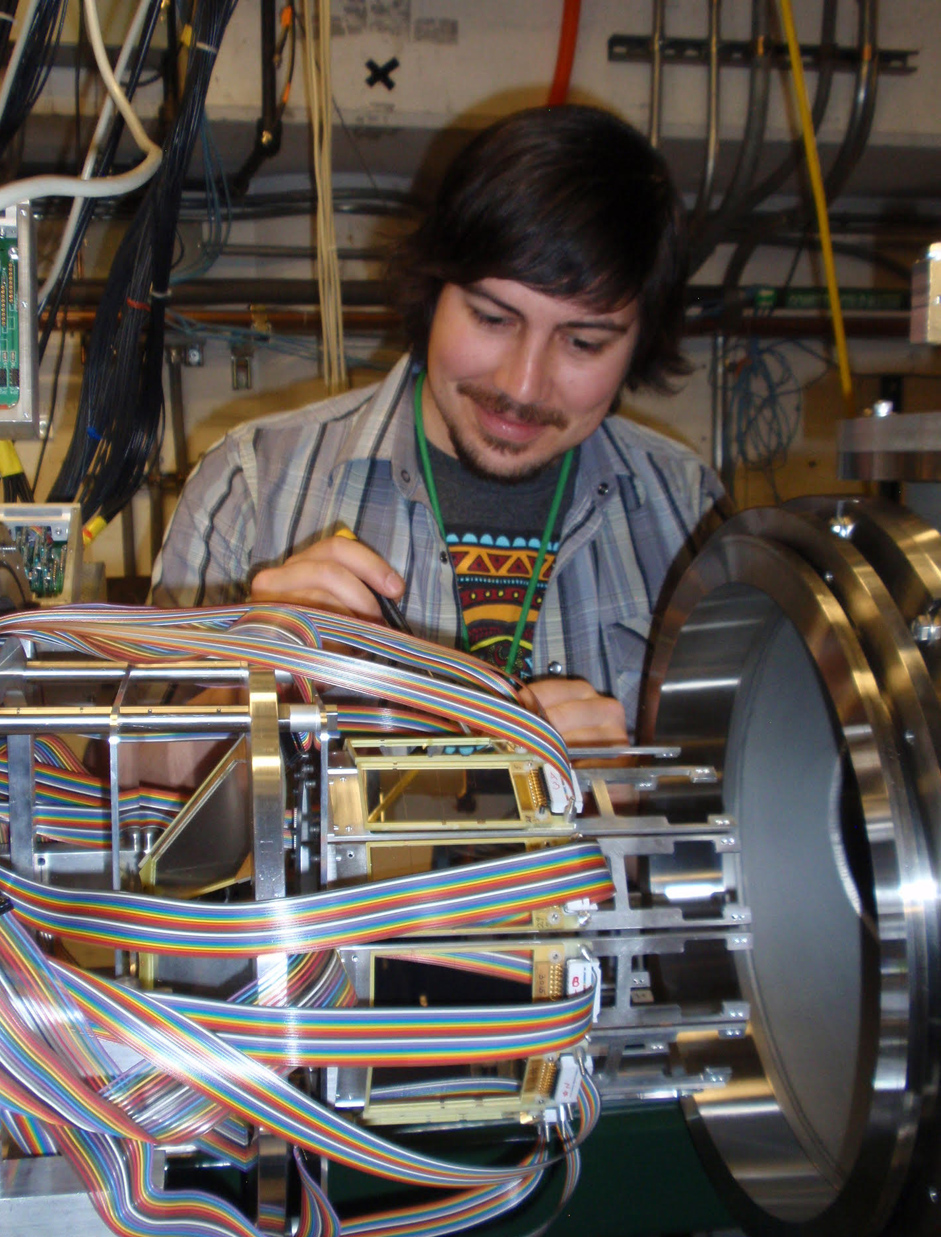
Dr David Walter
PhD Thesis, Rutgers University (October 2018)
Modern nuclear structure models suggest that the shell structure near the valley of stability, with well-established shell closures at N=50, for example, changes in very neutron-rich nuclei far from stability. Single-particle properties of nuclei away from stability can be probed in single-neutron (d; p) transfer reactions with beams of rare isotopes. The interpretation of these data requires reaction theories with various effective interactions. Often, approximations made to the final neutron bound-state introduce a large uncertainty in the extracted spectroscopic factor. To mitigate this uncertainty, Mukhamedzhanov and Nunes have proposed a combined, two-measurement method, where the external contribution of this bound-state wave function is fixed using a peripheral reaction, and is combined with a higher energy measurement with a larger contribution from the nuclear interior. By constraining the asymptotic behavior, the method enables spectroscopic factors to be deduced with uncertainties dominated by experimental statistics rather than the bound-state potential.
The (d, p) neutron transfer reaction with 35 MeV/u beams of 86Kr has been measured at the National Superconducting Cyclotron Laboratory (NSCL) to test this method. The reaction protons were detected with the Oak Ridge Rutgers University Barrel Array (ORRUBA) and Silicon Detector Array (SIDAR), arrays of segmented silicon strip detectors, the first implementation of such a confiiguration with fast beams at the NSCL. These measurements at 35 MeV/u were combined with previous studies of the 86Kr(d; p) reaction at 5.5 MeV/u to test the combined method. The bound-state potential for the ground state of 87Kr was successfully constrained
by extracting an asymptotic normalization coefficient (ANC) consistent with both the high- and low-energy measurements, which provides a corresponding constrained spectroscopic factor of S = 0.44 +0.09/-0.13 for the ground state of 87Kr.
Although a constrained bound-state potential for other low-lying states was not achieved, the successful results for the ground state prompted a study of the d(84Se,p)85Se reaction. The low-energy ANC analysis based on previously published results is presented in this work as well as preliminary results from the higher energy measurement using radioactive ion beams of 84Se at 45 MeV/u at the NSCL.

